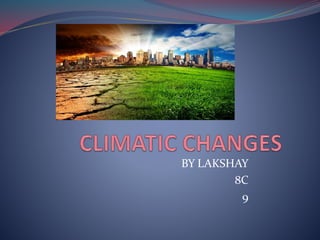Climate change refers to the ongoing increase in global temperatures and its effects on the climate system, mainly driven by human activities such as fossil fuel use and deforestation. Key contributors to climate change include excess consumption, food production, transportation, deforestation, manufacturing, and building energy consumption, which significantly emit greenhouse gases. The effects include rising temperatures, more severe storms, increased drought, and rising ocean levels, which threaten ecosystems and human communities.
















